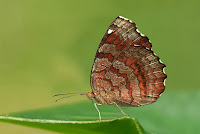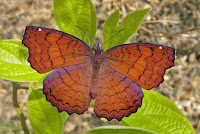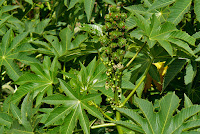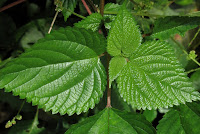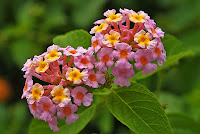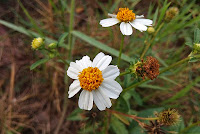<> Ariadne ariadne (Linnaeus, 1763) <>
the Angled Castor ผีเสื้อหนอนละหุ่งลายหยัก
Click on any photo to see all photos full size in Lightbox
Additions and corrections to the information provided on this page is always welcome. Please use the Contact form.
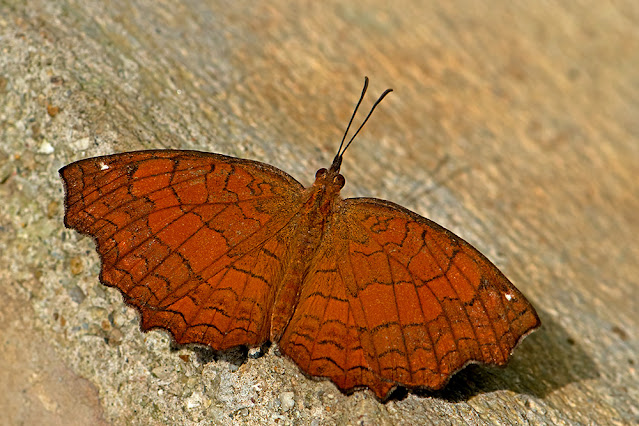
Photo taken at Doi Suthep-Pui National Park, Chiang Mai, Thailand. 400m a.s.l.

Ariadne ariadne is widespread across the region but not particularly common everywhere. The common name derives from Ricinus communis, the Castor plant, which is the most used larval host plant. The species is not sexually dimorphic and the sexes look the same although the female is slightly smaller than the male. The wings are strongly crenulated and it has a slow and graceful flight.
This species is multivoltine with a relatively short life cycle and many broods per annum. It is a very active butterfly and rarely stops unless it is feeding. Unlike many other species of Nymphalidae, Ariadne ariadne is only occasionally seen mud puddling.
Synonyms and previously used names: Ergolis ariadne, Ergolis coryta, Ergolis pallidior, Ariadne coryta
Taxonomy: Animalia - Arthropoda - Insecta - Lepidoptera - Nymphalidae - Biblidinae - Ariadne - ariadne
Regional subspecies: A.ariadne ariadne (W.Malaysia, Singapore), A.ariadne gedrosia (Indonesia), A.ariadne pallidior (India, Myanmar, Thailand, Laos, Cambodia, Vietnam, China, Taiwan, E.Malaysia), A.ariadne timora (Indonesia)
Regional Distribution: India, Nepal, Bhutan, Bangladesh, Myanmar, Thailand, Laos, Cambodia, Vietnam, China, Malaysia, Singapore, Indonesia
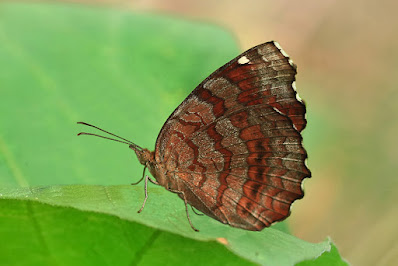 |
Khao Phanom Bencha National Park, Krabi, Thailand c.100m a.s.l. |
Habitat: Ariadne ariadne is found in a wide variety of habitats including open and disturbed forest, scrubland, grassland, hillsides, agricultural land, and urban areas. It is often seen in the vicinity of streams and elevations reach up to 1600m a.s.l.
Flight time: all year, depending on location Wingspan: 38-45mm
Life History: egg 5-7 days instar 1 2 days instar 2 2 days instar 3 2-3 days instar 4 2-3 days instar 5 3-4 days pupa 6-10 days Total egg to adult 22-31 days
All times are approximate and can vary depending on the season and on the host used.
Larval Hosts: Acalypha australis, Cnesmone javanica, Ricinus communis, Tragia involucrata, Tragia plukenetii, Tragia praetervisa (Euphorbiaceae).
Actual host plant used depends upon location and availabilty of plant species.
Adult Food Sources: Nectar - Rhamnus wightii, Ziziphus mauritiana (Rhamnaceae), Lantana camara, Verbena rigida (Verbenaceae), Ageratina adenophora, Bidens pilosa, Chromolaena odorata, Crassocephalum crepidioides, Gynura nitida, Parthenium hysterophorus, Tagetes erecta, Taraxacum javanicum, Tridax procumbens, Xerochrysum bracteatum, Youngia japonica (Asteraceae), Coleus barbatus, Leucas lamiifolia, Premna serratifolia, Rotheca serrata, Vitex negundo (Lamiaceae), Cestrum aurantiacum, Solanum mauritianum (Solanaceae), Hypericum japonicum, Hypericum mysurense (Hypericaceae), Rostellularia procumbens (Acanthaceae), Sida acuta (Malvaceae), Oplismenus undulatifolius (Poaceae), Oxalis latifolia (Oxalidaceae), Cytisus scoparius (Fabaceae), Verbascum thapsus (Scrophulariaceae), Heynea trijuga (Meliaceae), Mappia nimmoniana (Icacinaceae), Rhodomyrtus tomentosa (Myrtaceae), Oenothera rosea (Onagraceae), Fragaria nubicola, Prinsepia utilis, Rubus ellipticus (Rosaceae), Euphorbia milii, Euphorbia rothiana, Jatropha curcas (Euphorbiaceae), Engelhardia spicata (Juglandaceae), Dendrobium devonianum, Dendrobium primulinum (Orchidaceae), Heliotropium indicum (Boraginaceae). Other - mud puddling (occasional), over-ripe fruit, animal dung
Links to other pages in this series for species in the same subfamily

